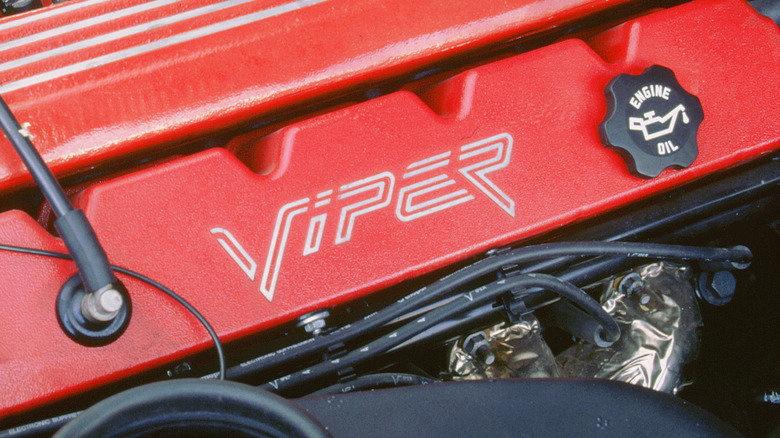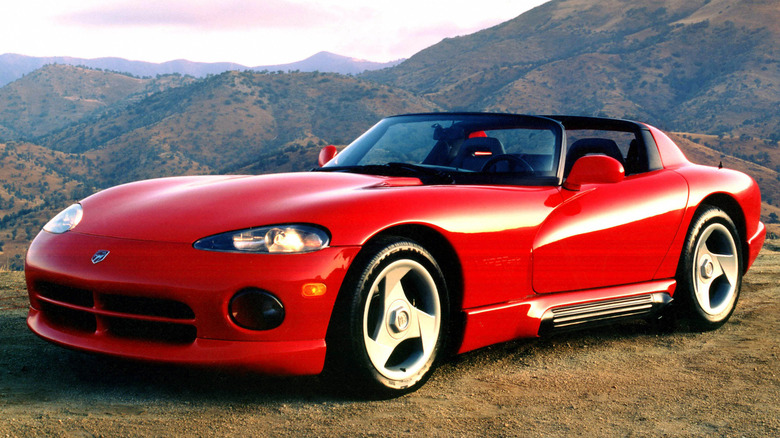How Lamborghini Influenced The Legendary Dodge Viper V10 Engine
The Dodge Viper, especially during its first iteration in the early 1990s, was (and is) one of the wildest sports cars ever conceived. The Dodge Challenger Hellcat has more horsepower, is faster off the line, and has a higher top speed, but is almost civilized compared to the safety feature-less Viper and its gargantuan V10.
The Viper's powerplant is almost the sole feature of the car as there are no interior comforts to speak of and the engine bay takes up more than half of the length of the car; it's basically a V10 go-kart with a lawn chair. When the engine first debuted in 1992, it had a displacement of 8 liters and put out 400 horsepower, insane numbers for the time.
But Dodge didn't just retool a V8 truck engine to have an extra bank of cylinders and call it a day. Like the Viper itself, the engine went through a long development process. In addition to Dodge engineers working day and night to make the engine worthy of the Viper, Lamborghini had a say in making the powerplant part of the Viper's venomous charm.
Dodge calls Italy for help
In 1987, the Chrysler Corporation bought Lamborghini to glean some information about how Lambo did its thing (and steal some engineers in the process), according to Hagerty. Coming off the sensation that was the Lamborghini Countach, it's safe to say the company knew how to make fast cars and was hard at work making the then-upcoming Lamborghini Diablo a reality. Chrysler would use this newfound treasure trove of engineers and R&D to take the Viper from a sketch to a reality.
At this point in time, the Chrysler performance heyday of the late 1960s and 1970s was long gone and with it any hope of having an in-house engine that was fast enough for the Viper. All the company could muster at the time was a heavy cast-iron engine and that clearly wasn't going to work for a car as lithe as the Viper. Chrysler went to Lamborghini, which helped the company make a V10 out of aluminum.
Dick Winkles, the engineer responsible for the Viper's drivetrain said (via MotorTrend): "I came back from Italy and heard, you're on the Viper now. We had some design help from Lamborghini, to convert iron to aluminum. You can't just cast the same block. Aluminum requires different strengthening ribs, has different cooling characteristics. Lambo designed the water jackets, they had a lot of experience with multi-cylinder aluminum engines." The significantly lighter V10 powerplant proved to be the Viper's secret ingredient and gave most other performance cars from the era exactly 10 things to worry about.

